Invisalign – Schenectady, NY
Discreetly Achieve Perfectly Straight Teeth
Are crooked, misaligned, or crowded teeth preventing you from grinning confidently? Fortunately, you no longer have to rely on metal brackets and pesky wires to achieve your smile goals! Thanks to Invisalign, Dr. Oshins can help you achieve perfectly straight teeth with virtually undetectable treatment. If you’d like to learn more about this orthodontic service, continue reading or contact our office today to get started!
Why Choose Oshins of Smiles for Invisalign?
- Virtual Smile Design: Preview Results Before Treatment Starts
- Custom-Made Treatment Plans
- New State-of-the-Art Dental Office
How Invisalign Works

While traditional braces rely on metal wires and brackets to perfect your smile, Invisalign clear braces use thin, plastic aligners to guide your teeth into the desired position. Throughout your treatment, you will be given custom-made trays designed for comfortable wear and powerful results. While each new set is designed specifically for that phase of your treatment, they will all be virtually undetectable, so even your loved ones will have a hard time noticing when you are wearing them!
Who Can Invisalign Help?
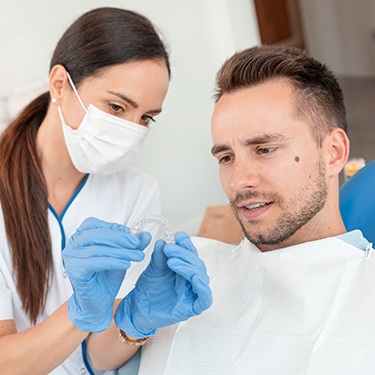
If you’re longing for a straighter smile and are interested in Invisalign, you must have a consultation first. Although it’s a popular solution, it’s not necessarily the right fit for everyone. Dr. Oshins will perform an examination and learn more about your dental goals to determine whether it’s the best treatment to help you. Continue reading below for common issues that benefit from this invisible solution! If you have additional questions, feel free to contact us and we’re happy to provide more information.
Crowded Teeth
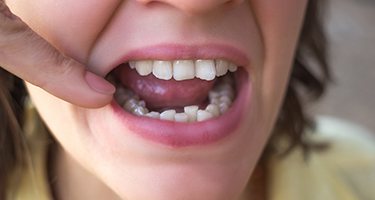
We tend to think of our teeth as immovable structures in our mouths, but the truth is that they continue shifting over the years due to ongoing pressure from chewing and speaking. They can become overcrowded which causes problems like:
- Tooth decay
- Gum disease
- Jaw aches or discomfort
- Difficulty biting or eating
This happens because when your pearly whites are pressed too closely together, it’s hard to reach all the surfaces to thoroughly clean them. Harmful bacteria are attracted to leftover bits of food and contribute to plaque and tartar buildup.
Fortunately, Invisalign gently repositions your teeth to their ideal placements so that you can brush and floss more effectively. As a bonus, having a more even smile can boost your confidence in your appearance.
Gaps Between Teeth
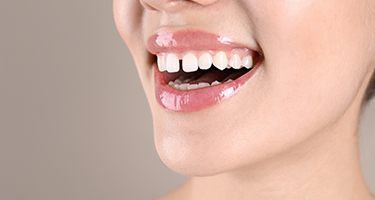
If you have gaps in your teeth, food is more likely to become stuck between them and draw unwanted germs. There are many reasons why you may have wider spaces, such as:
- Oral anatomy. Some people simply have teeth that are naturally inclined to be further apart.
- Small teeth. If they’re not large enough then they won’t line up next to each other appropriately.
- Having a large jawbone. Your teeth may spread apart to try to fill your mouth or become pushed out of place because there’s more area to spread out into.
Whatever the cause behind it, pulling your grin together can reduce the risk of decay, disease, or inflammation due to unprotected gum tissue between your teeth. If you’re not a good candidate for Invisalign, these issues can also be addressed with dental bonding.
Overbite
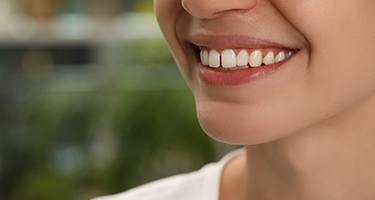
People with an overbite, also called an overjet, have top teeth that extend out too far over the lower arch. This can lead to jaw pain, speech issues, uneven dental wear and tear, and a stiff or locked jaw. It also leaves their upper arch more exposed which can increase the chances of damage due to injury, breaking, or cracking.
Underbite
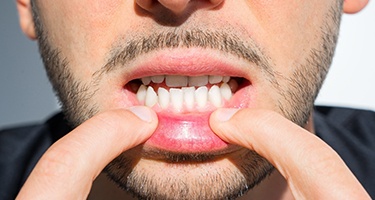
If you have an underbite, your lower teeth don’t sit under your top set the way they should. Instead, they’re exactly aligned, or your bottom arch extends beyond the upper. You’re more prone to sleep apnea as a result because your airway can become restricted in the upper nasal passages. You may also have a harder time breathing through your nose, eating normally, or enunciating words correctly.
Invisalign can often treat this with the inclusion of rubber bands or other attachments to gradually make the necessary adjustments.
Crossbite
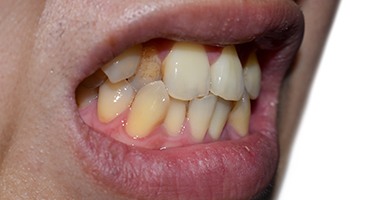
Crossbites occur when parts of your bottom teeth are slightly in front of the upper arch and are often due to genetics, poor oral hygiene habits, or the premature loss of baby teeth. Although Invisalign can address it, Dr. Oshins may need to include elastics or other accessories to help shift your jaw into proper alignment.
Open Bite
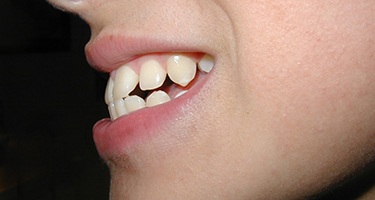
Are your top and bottom teeth unable to overlap or touch when you close your mouth all the way? If so, you may have what’s referred to as an open bite. This is typically a result of poor bone development or lack of proper nutrition as a child. It can leave you unable to form certain sounds or words and causes excessive wear and tear of your back teeth which leaves them more prone to injury. Invisalign can improve your bite pattern to allow your smile to come together the way it should.
Living with Invisalign Aligners

If you had traditional braces when you were younger, then you may remember that there was a bit of an adjustment period at first. The good news is that Invisalign uses clear, removable aligners instead of metal brackets and wires, so the teeth-straightening process is considerably less of a hassle. That said, there are still a few things you’ll need to tweak to your routine to stay on-track with your treatment plan. Below, you’ll find some helpful information on the topic!
Wearing Your Trays

Since Invisalign aligners are removable, patients sometimes assume that they can take them off whenever they want. That’s not really the case. Basically, you need to keep them on for a minimum of 20 hours a day, every day to stay on-track with your treatment timeline. So, it’s a good idea to get in the habit of only taking them off when it’s absolutely necessary.
Tip: Not sure if you’re wearing your aligners for the recommended amount of time? Use the stopwatch on your phone as a guide!
Cleaning Your Aligners
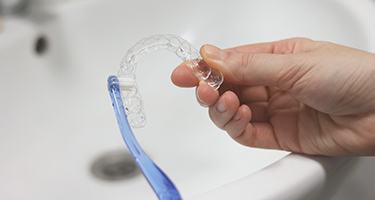
If you don’t take good care of your aligners, it won’t take long for stubborn stains to surface. In addition to drawing unwanted attention to your smile, this can lead to an unpleasant odor on your breath and even negatively impact your oral health. So, make sure that you use a soft-bristled toothbrush and clear, mild dishwashing liquid to clean them after each meal.
Tip: Check the temperature of the water when you’re cleaning your aligners! If it’s too hot, they can warp.
Eating & Drinking

Unlike traditional braces, which require patients to tweak their diet, Invisalign doesn’t come with any dietary restrictions. In fact, there’s really only one rule: you need to remove your aligners before eating or drinking anything other than water. Outside of that, just do your best to eat healthy, well-balanced meals that benefit both your oral and overall health.
Tip: In the hours following your transition to a new set of aligners, opt for plain yogurt, oatmeal, and other soft foods to help prevent soreness.
Damaging a Tray

Although Invisalign aligners are durable, they aren’t unbreakable. If yours do shatter into several pieces, then don’t hesitate to call us so we can determine if it’s safe to move onto the next set of trays in the series. We also recommend calling us if you accidentally misplace your aligners so we can decide how to proceed with as little delays as possible.
Tip: Always keep your previous set of aligners in case you need to wear them while replacement ones are made!
Attending Progress Visits

Fortunately, Invisalign doesn’t require you to come to our office monthly for adjustment appointments. You will, however, need to visit us every 6-8 weeks so we can make sure you’re on-track with your treatment plan. If you aren’t, we can determine why that is and figure out what changes need to be made to avoid further delays.
Tip: Always wear your aligners to your progress visits, even if you are starting a new set after!
Benefits of Invisalign
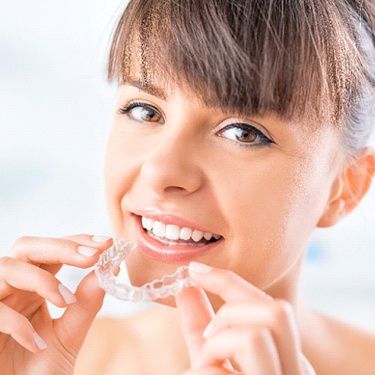
Invisalign is a revolutionary, state-of-the-art teeth-straightening solution, and it’s not just because the aligners are virtually undetectable. If you are considering this orthodontic treatment for yourself, then you’ll be happy to hear that there are several noteworthy benefits, including:
Discreet Aligners
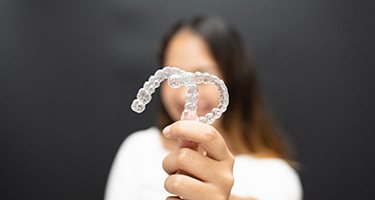
Of course, one of the biggest benefits of choosing Invisalign in Guilderland is that your orthodontic treatment will be virtually undetectable. After all, the aligners are completely see-through and custom-made to fit the contours of your teeth perfectly. So, when you wear them, they blend in instead of drawing unwanted attention to your smile.
Improved Comfort

One downside of traditional braces is that the metal brackets and wires aren’t comfortable. In fact, it’s very common for patients to experience mouth sores throughout their teeth-straightening journey. Fortunately, that’s not the case with Invisalign. Since the aligners are crafted from smooth plastic, they don’t irritate the soft tissue in your mouth.
Entirely Removable

In an effort to prevent orthodontic emergencies, patients with traditional braces are asked to adjust their diet. That’s not necessary with Invisalign because the aligners are removable. As long as you stick to well-balanced meals that contain nutrient-dense foods the majority of the time, you’re free to eat all of your favorites on your journey to your dream smile.
Less Time in the Treatment Chair
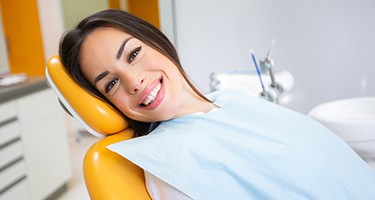
Another considerable perk: there aren’t monthly adjustment appointments with Invisalign. Instead, patients come to our office every 6-8 weeks so we can monitor their progress. Most of the time, these visits are less than 20 minutes too, so you can see why busy students, parents, and professionals love clear aligner treatment: it’s considerably more convenient!
Hassle-Free Oral Care
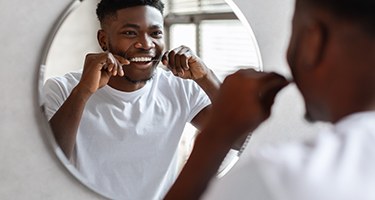
Oftentimes, patients with traditional braces need to buy special oral hygiene products, like interproximal toothbrushes and pre-threaded floss, to ensure tooth decay and other common oral health problems don’t develop. That’s not the case with Invisalign. Since the aligners are removable, all you need to do is take them out and store them properly first. Then, you can brush, floss, and rinse like you usually do!
Shorter Average Treatment Timeline

One perk of Invisalign that is sometimes overlooked is the average treatment timeline. While traditional braces usually take two years or more, Invisalign typically delivers results in just 12-18 months. Not only that, but you’ll see improvements in the alignment of your teeth and bite much sooner since the trays are see-through and removable!
Understanding the Cost of Invisalign
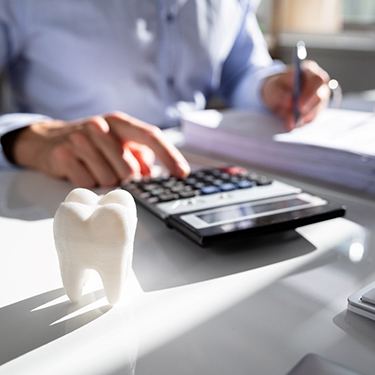
If you’re unhappy with the state of your smile and want to do something about it, our team here at Oshins of Smiles is ready to help you with every step of the process—including understanding the cost of treatment. We’ll be happy to provide you with an estimate when you visit us for a consultation, so don’t hesitate to give us a call today!
Factors That Affect the Cost of Invisalign
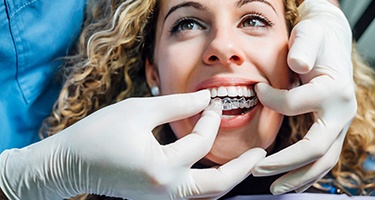
The cost of Invisalign will vary depending on your individual circumstances, but a few main factors that often influence the total cost include:
- How many aligners you need to straighten your teeth – This is often related to the extent and type of your misalignment.
- Whether you are straightening one arch or both – It’s more expensive to straighten both the upper and lower teeth than straightening just one or the other.
- Your compliance with treatment – Lost or damaged aligners will inevitably need to be replaced, and these added costs can quickly add up. Additionally, not adhering to the 22-hour rule will lengthen your overall treatment process.
- Whether you require extra accessories – If you need elastics (small rubber bands) or other accessories, these can also factor into the final cost.
Invisalign VS Smile Direct Club™: Which Costs More?
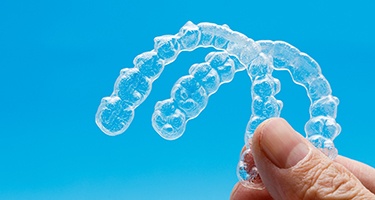
Many patients like to weigh their options when it comes to orthodontic treatments, and DIY clear aligner treatments like Smile Direct Club™ have also become popular alongside Invisalign. These DIY alternatives usually cost around $2,000 whereas Invisalign may cost anywhere from $3,000 to $8,000. As attractive as the DIY system might be, it’s important to note a few differences between this option and Invisalign:
- DIY aligners are often made out of cheap plastic, while Invisalign uses a patented material that is designed for comfort and efficiency.
- There have been accounts where DIY aligners have been ineffective, and in some cases, they’ve even been known to worsen dental alignment!
- With Invisalign, you’re guaranteed the personalized support of our dental team!
Does Dental Insurance Cover Invisalign?
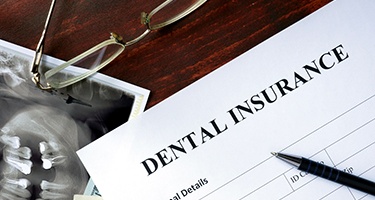
Some dental insurance policies include a once-in-a-lifetime provision for orthodontic treatment and Invisalign is often included, though you will need to verify with your provider beforehand. We’re able to work with your insurance plan and fully maximize your benefits so that your Invisalign treatment isn’t a financial burden on you. If your insurance doesn’t cover Invisalign, you might be able to use your FSA or HSA to pay for your treatment instead.
Options for Making Invisalign Affordable

Our team is happy to work with you to find a way to make your Invisalign treatment more affordable! If you don’t have dental insurance or orthodontic coverage, we offer alternative payment options with low-interest financing including CareCredit . If you’re ready to straighten your smile with Invisalign, don’t hesitate to schedule a consultation to figure out the specifics—including the financial details.
Invisalign FAQs
How Long Does Invisalign Take?
Invisalign has an average treatment timeline of 12-18 months, which is considerably shorter than traditional braces. However, the exact length of your treatment will depend on several important factors, including the severity of your misalignment. Something else that will come into play once you begin the series of clear aligners is your compliance with the treatment guidelines. “Rules” like wearing your aligners for 20 to 22 hours a day might seem inconvenient at first, but they are in place to keep you on-track with your treatment plan. With all that said, we can absolutely give you an estimate of your treatment timeline during your initial consultation.
Does Invisalign Hurt?
It’s not uncommon for patients who are interested in Invisalign to be concerned about the pain. Fortunately, Invisalign near Schenectady is considerably more comfortable than alternatives like traditional braces. In addition to being custom-made to fit your teeth exactly, the smooth plastic trays are designed not to irritate the soft tissue in your mouth. So, while you will likely experience some soreness immediately following the transition to a new aligner, your overall experience will be significantly more pleasant.
What Happens After Invisalign?
Remember, Invisalign is just the first step in achieving your smile goals. After you’ve worked through your entire series of aligners, we will give you a retainer. It’s important that you wear it consistently since it will play a crucial role in preventing orthodontic relapse (the phenomenon in which your teeth begin to drift back to their previous, misaligned positions). Don’t worry – retainers today are more discreet as well, allowing you to wear it without worrying about drawing unwanted attention to your smile.
What if My Invisalign Broke?
Although Invisalign aligners are quite durable, they aren’t completely indestructible. If yours breaks, do your best not to panic. And, of course, do not use superglue or any other household items to attempt to repair them. Instead, give our team a call as soon as you can. From there, we can take a look at your treatment plan and determine the next best steps, like moving onto your next set of aligners or wearing the previous ones until a replacement arrives.
I Need a Checkup & Cleaning I am Looking for a Dentist for My Child I am Concerned About Bleeding Gums I am Concerned About Sleep Apnea I Have a Cavity or Broken Tooth I am Missing One or More Teeth I am Unhappy with My Smile I Want a Straighter Smile I am in Pain & Need Help View Our Services
